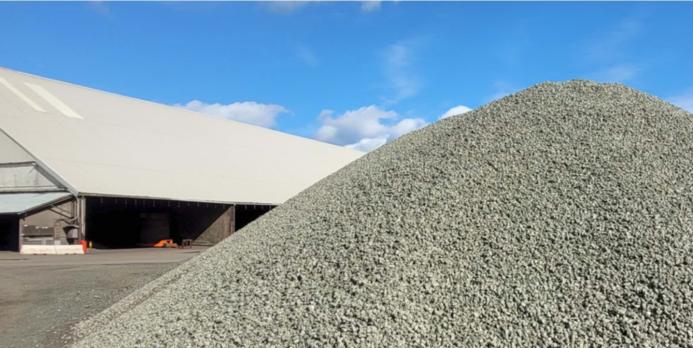SiGS cuts greenhouse gas emissions in concrete production
Researchers in Norway unveil alternative to traditional cement in the concrete manufacturing process, with potential to reduce greenhouse gas emissions by more than 95%.
Research by Norway’s SINTEF Helgeland has revealed that finely powdered slag, Silica Green Stone (SiGS), has been employed as a binder additive to replace up to 40% of the cement typically used in concrete.
The results say senior researcher Per Anders Eidem, are nothing short of remarkable, showcasing a 95% reduction in greenhouse gas emissions compared to conventional cement, which contributes to 8% of global emissions.
"Cement manufacturers acknowledge the urgency to address the climate footprint of their product and make concrete more sustainable," states Eidem, emphasizing the industry's commitment to innovation in the face of environmental challenges.
SiGS, a by-product of silicomanganese manufacturing, was traditionally used as industrial fill. Eramet, a major manganese manufacturer, sought alternative uses for this material, leading to the collaborative project named VALSiGS.
Eidem highlights the environmental benefits of using SiGS, comparing it to other initiatives such as flue ash from coal-fired power stations, which face increasing restrictions. The SiGS slag, when finely ground, exhibits binding properties similar to those derived from iron smelting, providing a viable and sustainable substitute for cement.
Collaborating with concrete paving specialists Aaltvedt Betong and prefabricated slab manufacturers Block Berge Bygg, the researchers conducted extensive tests on SiGS, grinding it to the same particle size as cement for both dry and wet concrete mixtures. The results demonstrated the concrete's strength after 28 days, meeting industry standards and confirming its suitability for various construction purposes.
While the early strength of SiGS concrete may be slightly lower, it catches up and matches the strength of environmental cement after 28 days, offering a practical alternative for sustainable construction.
The VALSiGS project plans to scale up testing and estimates a smaller proportion of SiGS slag will be used in the mixtures as they move to the next stage. The potential for a 95% reduction in greenhouse gas emissions is a game-changer for an industry seeking greener alternatives.
The project involves major pilot projects, including testing SiGS and other binding agents to develop more climate- and eco-friendly roads. Chief Research Scientist Christian John Engelsen at SINTEF Community emphasizes the importance of sustainability throughout the supply chain and materials use in roadside constructions.
The VALSiGS project, with participants including Eramet, SINTEF Helgeland, SINTEF Industry, the University of Agder, Aaltvedt Betong, and Block Berge Bygg, aims to create an eco-friendly binding agent that partially replaces cement, reducing the environmental footprint of concrete. The project estimates that for every percentage point SiGS replaces traditional cement, the climate footprint of concrete decreases by about 0.85 percent.
Furthermore, if all available SiGS in Norway were utilized, it could save about 227 GWh annually and reduce CO2 emissions by approximately 180,000 tonnes per year.
As the project advances, SiGS and other binding agents will undergo further testing in a Green Platform project called 'Bærekraftig verdikjede og materialbruk i vegbygging' (Sustainable value chains and materials use in road construction), involving key participants like Nye Veier and VIA. This initiative aims to test and commercialize innovative approaches, solidifying the role of SiGS as a frontrunner in sustainable construction practices.

